Do you have a question about the Huawei NetEngine-8000-M8 and is the answer not in the manual?
Essential steps to prevent damage from static discharge to components.
Guidelines for cable tie intervals and proper cable management within cabinets.
Ensures readiness of equipment room, power, and checks environmental suitability.
Emphasizes ESD precautions like wrist straps and gloves before handling boards.
Details proper techniques for holding ejector levers and inserting boards into slots.
Explains the necessity of installing filler panels for device functionality and protection.
Illustrates and labels the main components of the chassis for identification.
Details required cabinet types (ETSI, 19-inch) and environmental considerations.
Warns about heat dissipation capabilities and loading limits within the cabinet.
Provides instructions on correct positioning of mounting ears for different cabinet types.
Details loosening screws, holding ejectors, inserting, and tightening screws for board installation.
Highlights the need for proper alignment and insertion of the fan module.
Emphasizes correct alignment and insertion, and not installing when powered on.
Lists and illustrates common cables used with the chassis.
Step-by-step guide for connecting the DC power cable to the PIU board.
Critical DANGER notices regarding electrical shock, proper connection, and cable bending.
Recommendations for routing power and signal cables separately and labeling them.
Notes on limitations for shielded network cables in specific cabinet types.
Recommendations for E1 cable placement and connector crimping.
Includes warnings about optical ports, FOAs, bending radii, and connector protection.
Specifies the maximum number of fibers per corrugated pipe.
General advice on routing corrugated pipes based on equipment room conditions.
Procedure for connecting network management cables to the ETH/OAM port.
Guide for connecting the clock/TOD/RS-485 cable to the control board.
Details the ALMI/ALMO port for alarm input and output connections.
Illustrates the placement of various cables and fibers on the chassis.
Notes on routing power cables to avoid interfering with fan maintenance.
Shows cable routing for the device and other equipment within the same cabinet.
A comprehensive list of items to check after installation is complete.
Compares transmit and receive optical power against thresholds for 50 Gbps modules.
Details using an OTDR meter to check optical link quality and cleanliness.
Verifies external power supply voltage, fuse capacity, and input power.
Describes normal and abnormal states for FAN/PWR indicators.
Details normal/abnormal states for STAT, PROG, SYNC indicators and how to handle issues.
Essential steps to prevent damage from static discharge to components.
Guidelines for cable tie intervals and proper cable management within cabinets.
Ensures readiness of equipment room, power, and checks environmental suitability.
Emphasizes ESD precautions like wrist straps and gloves before handling boards.
Details proper techniques for holding ejector levers and inserting boards into slots.
Explains the necessity of installing filler panels for device functionality and protection.
Illustrates and labels the main components of the chassis for identification.
Details required cabinet types (ETSI, 19-inch) and environmental considerations.
Warns about heat dissipation capabilities and loading limits within the cabinet.
Provides instructions on correct positioning of mounting ears for different cabinet types.
Details loosening screws, holding ejectors, inserting, and tightening screws for board installation.
Highlights the need for proper alignment and insertion of the fan module.
Emphasizes correct alignment and insertion, and not installing when powered on.
Lists and illustrates common cables used with the chassis.
Step-by-step guide for connecting the DC power cable to the PIU board.
Critical DANGER notices regarding electrical shock, proper connection, and cable bending.
Recommendations for routing power and signal cables separately and labeling them.
Notes on limitations for shielded network cables in specific cabinet types.
Recommendations for E1 cable placement and connector crimping.
Includes warnings about optical ports, FOAs, bending radii, and connector protection.
Specifies the maximum number of fibers per corrugated pipe.
General advice on routing corrugated pipes based on equipment room conditions.
Procedure for connecting network management cables to the ETH/OAM port.
Guide for connecting the clock/TOD/RS-485 cable to the control board.
Details the ALMI/ALMO port for alarm input and output connections.
Illustrates the placement of various cables and fibers on the chassis.
Notes on routing power cables to avoid interfering with fan maintenance.
Shows cable routing for the device and other equipment within the same cabinet.
A comprehensive list of items to check after installation is complete.
Compares transmit and receive optical power against thresholds for 50 Gbps modules.
Details using an OTDR meter to check optical link quality and cleanliness.
Verifies external power supply voltage, fuse capacity, and input power.
Describes normal and abnormal states for FAN/PWR indicators.
Details normal/abnormal states for STAT, PROG, SYNC indicators and how to handle issues.
| Brand | Huawei |
|---|---|
| Model | NetEngine-8000-M8 |
| Category | Network Hardware |
| Language | English |

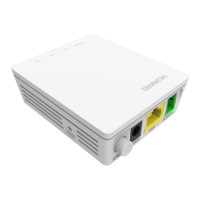
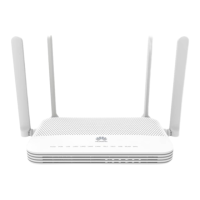
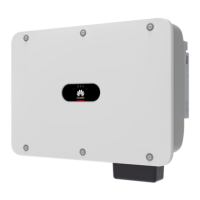


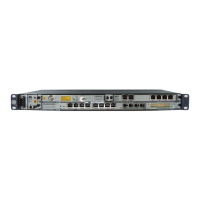
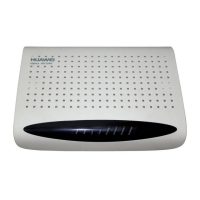
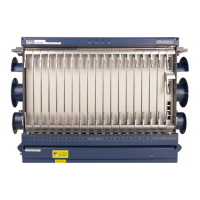
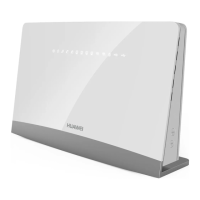
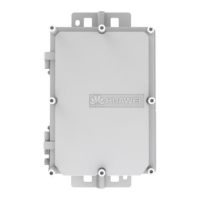
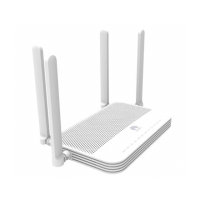
